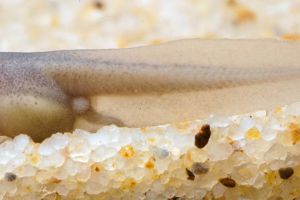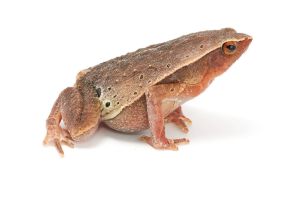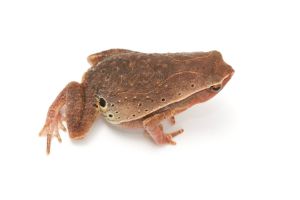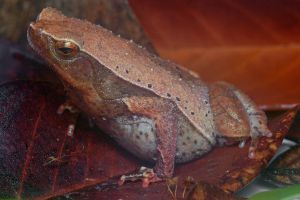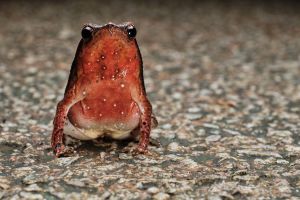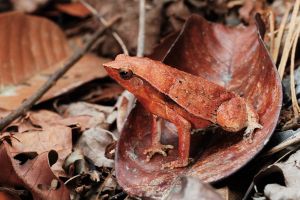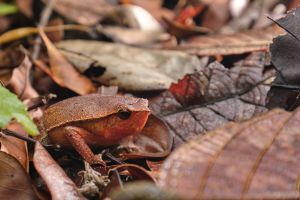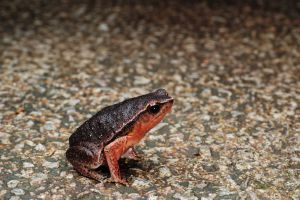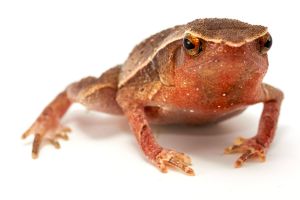
Frogs of Borneo

Frogs of Borneo

Frogs of Borneo

Frogs of Borneo

Frogs of Borneo

Frogs of Borneo

Frogs of Borneo

Frogs of Borneo

Frogs of Borneo

Frogs of Borneo

Frogs of Borneo
meizon
Borneo Big Sticky Frog
Kalophrynus meizon was formerly known as K. pleurostigma, a name that turned out to include several distinct species (Zug 2015). It is a stocky frog that lives in the leaf litter of lowland rainforest. Females reach almost 57 mm in snout–vent length (SVL), while males reach about 50 mm. It is a widely distributed lowland species, also found in hilly terrain up to 800 m above sea level.
The face and anterior flanks are dark brown, whereas the back is lighter in tone. However, the color pattern is variable: greyish, brown, chocolate brown, or orange brown individuals of K. meizon have been documented. The back and flank are separated by a light, thin stripe that originates at the tip of the snout, connects the nostril to the upper eyelid, and continues above the eardrum down the flank. Ocellus spots (dark center, light edge) are present in the groin. Smaller black spots are scattered on the back. The dorsal coloration mimics dead leaves. The eardrum is visible but not very conspicuous. The snout can be quite pointed. The fourth (outer) finger is longer than the terminal segment (phalanx) of the third finger. There are two tubercles under the fourth finger. Males have distinctive spines on their backs.
The abundance of this species has not been studied. It may be locally common, but we have encountered it only occasionally.
Like other sticky frogs, this species prefers walking to hopping. When molested, sticky frogs secrete a sticky white substance from their skin. Inger and Stuebing (2005) describe K. meizon as a specialized ant eater. This might be true for all species in the genus but requires future corroboration.
We do not have images of fully grown tadpoles. The tadpole image shows an early hatching stage, still bearing adhesion glands. Interestingly, a limb bud is well developed at this early stage. The early-stage specimen was identified by DNA matching.
Version tracking
-
05.08.2025
photos updated, edits
